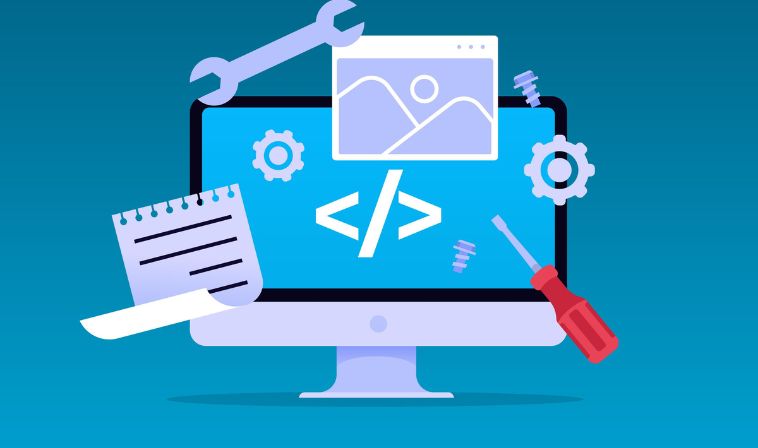Must-Have Generative AI Testing Tools for Procedural Efficiency & Scaling
5 Mins Read
Published on: 14 July 2025
Last Updated on: 15 July 2025

- The Evolution of Software Testing
- From Manual QA to Automated Testing
- Enter Generative AI
- Benefits of Generative AI Testing Tools
- Caveats of Generative AI Testing Tools
- Top Generative AI Testing Tools To Explore In 2025
- TestRigor – Generative AI for End-to-End Testing
- ACCELQ Autopilot
- TestGrid CoTester
- TestCollab – QA Copilot
- Is It Worth It?
In today’s digital-first world, companies are under immense pressure to innovate quickly, release high-quality products, and stay competitive — all while managing tight budgets and increasingly complex tech stacks. Traditional quality assurance (QA) methods, which rely heavily on manual testing and scripting, are no longer sufficient to meet these demands.
This is where generative AI testing tools are stepping in, offering a game-changing approach to software testing. By leveraging artificial intelligence to automate and optimize test creation, execution, and maintenance, these tools are enabling businesses to shift from reactive QA to proactive, intelligent testing strategies.
In this article, we’ll explore why generative AI testing tools are becoming essential for modern businesses, how they work, their advantages, and how you can implement them to future-proof your QA process.
The Evolution of Software Testing
Technologically speaking, generative AI testing tools play a significant role in the broader context. However, we did not arrive there magically. There was a whole journey that shaped the current landscape.
Here is a brief overview of the evolution of software testing over time.
From Manual QA to Automated Testing
Manual testing has long been the backbone of QA, with testers writing and executing test cases by hand. While this approach offers precision and context-based evaluation, it is slow, labor-intensive, and prone to human error.
As software systems became more complex, automated testing emerged as a solution. Automated tools, such as Selenium, allowed QA teams to write scripts that could repeatedly test software applications.
However, even automation has its limitations, particularly in terms of the need for technical skills, frequent maintenance, and the high upfront effort required for scripting test scenarios.
Enter Generative AI
Generative AI shifts this paradigm by utilizing machine learning and natural language processing to generate test scripts and scenarios autonomously.
These tools can understand application flows, user behaviors, and business logic, allowing them to create and maintain comprehensive test coverage with minimal human input.
Generative AI doesn’t just replicate traditional testing — it reimagines it. It empowers QA teams to focus on higher-level analysis and strategic improvement, rather than being bogged down in repetitive tasks.
Benefits of Generative AI Testing Tools
The real question is why generative AI testing tools are gaining popularity. To understand this question, you need to gain a better understanding of the benefits of these tools. Here are some of the most prominent benefits of generative AI testing tools that you need to know:
- Generative AI-based testing tools are equipped with substantial computational power. These tools utilize this capability to generate multiple test cases and scenarios. Therefore, creating detailed foundational data for a product or a program.
- AI tools have one of the best predictive capabilities. As a result, these tools can easily predict and analyze several different test cases and high-risk scenarios. The best part is that all of this is done in real-time without wasting a single minute.
- AI testing is more efficient than human testers in conducting tests. Artificial Intelligence can test multiple scenarios simultaneously and present more comprehensive data compared to manual testing, which can be time-consuming.
- AI has a better grasp on identifying defects at a fraction of the time a tester might usually take. This reduces development time and makes it more efficient. As a result, this enhances the turnaround time.
Caveats of Generative AI Testing Tools
Just as there are benefits of generative AI testing tools, there are caveats as well. These caveats can affect the overall essence of the said task. Here are some of the most significant drawbacks or risks associated with AI testing tools.
- There is a serious question regarding the credibility of the results from such testing tools. In other words, many people believe that AI testing tools are not foolproof or devoid of human intervention, since generative AI is itself on an evolutionary cycle. Therefore, no tool can keep pace.
- These tools rely heavily on large data sets. In other words, such tools need data accessibility to function optimally. If your infrastructure does not accommodate this, then implementation can become a challenge.
- Generative AI tools are also programs. Therefore, they lack the flexibility of human cognizance. As a result, these tools cannot function effectively uif they are presented with complex test scenarios.
Top Generative AI Testing Tools To Explore In 2025
The market is currently saturated with numerous AI-based testing tools. Hence, finding the right one can be a challenging task. However, we have got you covered. Here are some of the prominent generative AI testing tools that you need to know in 2025.
TestRigor – Generative AI for End-to-End Testing
TestRigor is a powerful AI-driven testing platform that enables end-to-end test automation in plain English. It removes the need for programming knowledge, making test creation, execution, and maintenance accessible for non-technical users.
testRigor stands out for its ease of use, scalability across web, mobile, and desktop platforms, and its ability to generate and maintain robust test cases with minimal human intervention—ideal for fast-paced Agile and DevOps environments.
ACCELQ Autopilot
This is a known name in the business landscape. The platform allows business processes to conduct autonomous testing, generation, and execution.
The platform operates on an Agile delivery cycle, making it easier to deliver projects on time. Therefore, a comprehensive solution for all your business needs.
TestGrid CoTester
TestGrid is a robust generative testing tool that has been retrofitted with features to make it more suitable for the varied and multidimensional needs of the current business landscape.
The tool uses a simple language to study software, and not a complex one. This shift to simplicity makes it better fitted for flexibility and accessibility.
TestCollab – QA Copilot
TestCollab is primarily an automation tool for testing. The software enables users to input commands using simple English.
Therefore, it allows a wide range of audiences to use it without hassle. The application does take time, but once it adapts to test scripts, it can analyze hundreds of test cases in the blink of an eye.
Is It Worth It?
In all honesty, businesses that cannot produce results at a rapid pace may not remain relevant in the next five years. This is because generative AI is moving at a meteoric pace with no remorse.
Hence, the only way to stay ahead of the curve is to utilize generative AI testing tools. These tools identify and understand AI better than anything. However, they are still in the development stage. Hence, approaching the situation in this manner is imperative in the long run.



















Comments Are Closed For This Article